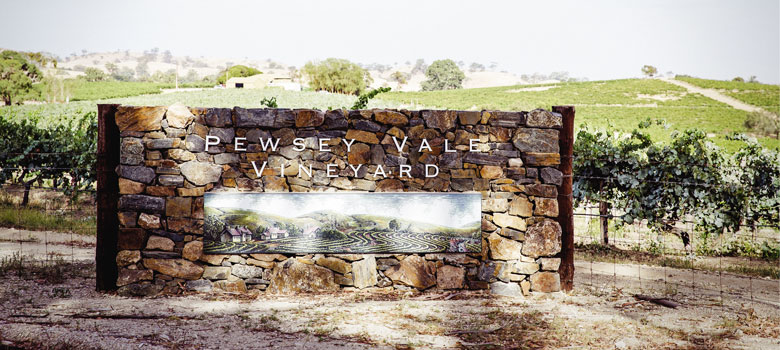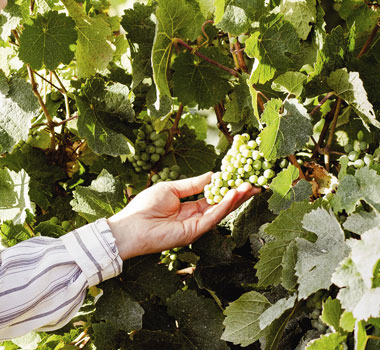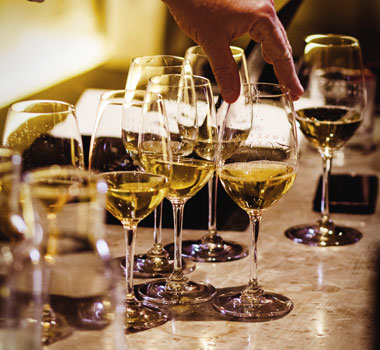
Wine
Cult Vineyards: Perfect Pewsey
Selector visits South Australia’s Eden Valley to explore Pewsey Vale, arguably Australia’s greatest Riesling vineyard.
When it comes to nobility and grapes, it’s hard to go past Riesling. Its pedigree, bright fresh flavours and ability to age hold it in high esteem the world over. But Riesling has something else that elevates it above all others: its ability to articulate its place of origin with pure, unadulterated clarity.
Purity is Riesling’s true asset, and the thing that turns wine lovers into fanatics. For fans, purity is the bridge that connects them to the unsolved mystery of wine; the magic that transfers the characteristics and flavours of the soil and surrounds into the wine. It’s akin to tasting nature and is the thing that makes wine like nothing else on earth.
But grapes can be fickle and whilst the stars need to align to produce greatness, the underpinning factor is site. Without a great vineyard, there is no magic.
Australia is blessed with many great Riesling sites and one of the greatest is the beautifully contoured slopes of Eden Valley’s Pewsey Vale.

Cool climate pioneer
Pewsey Vale was established in 1847 by Joseph Gilbert after arriving from England in 1839. Naming the site after the ‘Vale of Pewsey’ back in his home county of Wiltshire, Joseph planted Cabernet, Shiraz, Verdelho, Gouias and Riesling, establishing Australia’s first known high altitude, cool climate vineyards.
The cuttings, hailing from Germany’s Rheingau region, eventually formed the base material from which much of Australia’s Riesling was propagated.
Joseph’s Riesling soon began to get noticed, with Thomas Hardy, the ‘Father of South Australia’s Wine Industry’ noting Joseph’s wine as “fine, light and delicate…and nearer in type to the Rhine wine than any produced in the colony.”
William, Joseph’s son, soon joined in his pursuits and as the vineyards expanded, Pewsey Vale Riesling was sold around Australia and exported to Europe. Joseph passed in 1881 and William carried on making Pewsey until the early part of the next century. However, at the turn of the century, tastes shifted towards fortified wine and when William died in 1923, the property was sold and the memory of Pewsey Vale’s wines slowly faded.
Riesling returns


Around 1960, Geoffrey Angus (GA) Parsons, the owner of the old Pewsey land, visited the Rhine and became enchanted by the fine, pure Rieslings he tried there.
Remembering that his property once grew Riesling, he was motivated to re-establish the tradition, and on return, contacted Wyndham Hill-Smith, cricketer, storyteller and Yalumba CEO, and proposed the replanting of Pewsey Vale. This proposal required investment that GA did not have and he turned the ownership of the vineyards to Wyndham and the Hill-Smith family.
So in 1961, Riesling returned to Pewsey just as Australian drinkers were starting to go back to table wine. Riesling began to soar and through the 60s and 70s, Pewsey Vale joined the ranks of Vickery, Leo Buring and Gramp as go-to Riesling names.
The popularity of wine continued to grow through the 70s and into the 80s. Life was good in the wine world, but our labelling laws had not kept up; regardless of what you put in the bottle, no law dictated what you needed to call it. And as Riesling, or ‘Rhine Riesling’, was popular, all sorts of varieties (sweet and dry) started masquerading as Riesling, diluting its identity into something sweet and generic.
To read the full story, pick up the latest issue of Selector Magazine at newsstands from March 7.